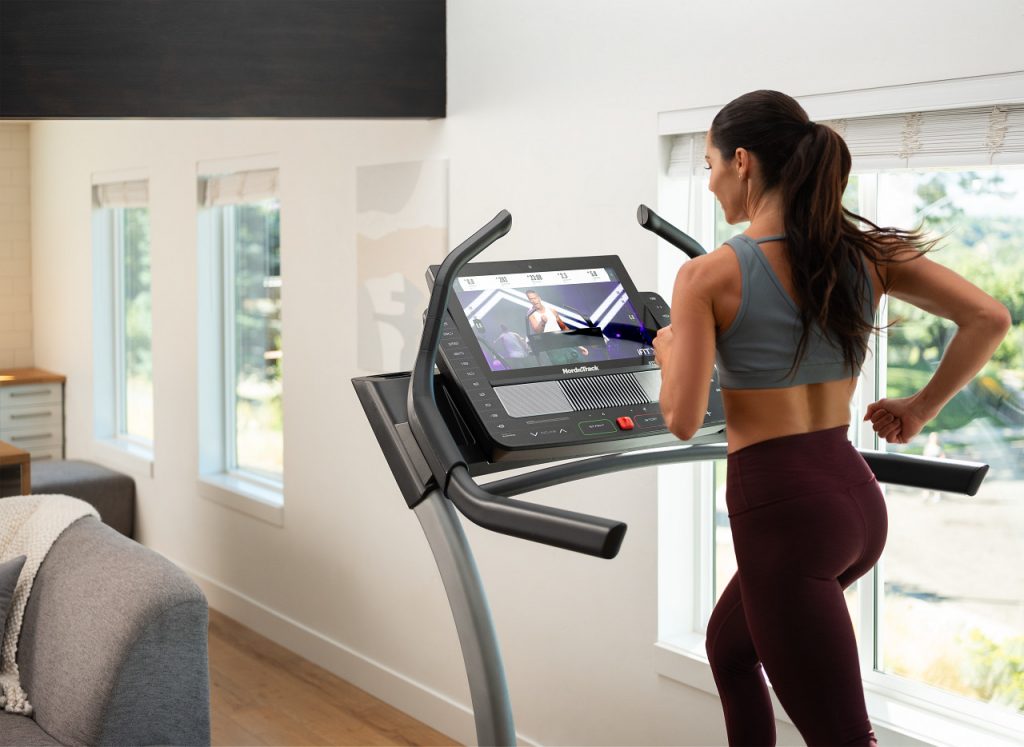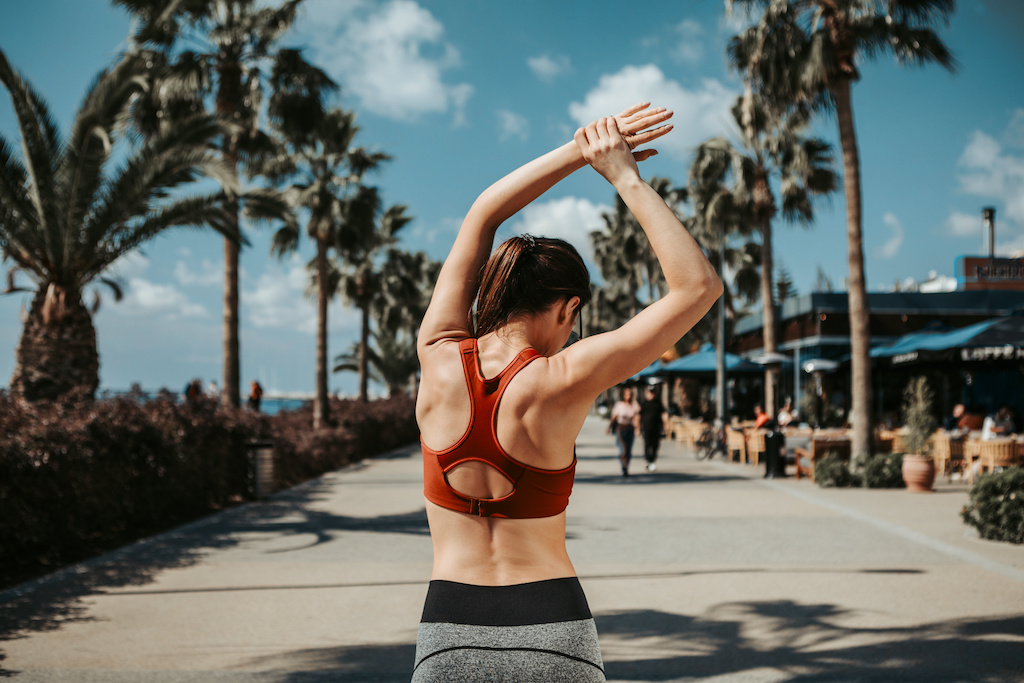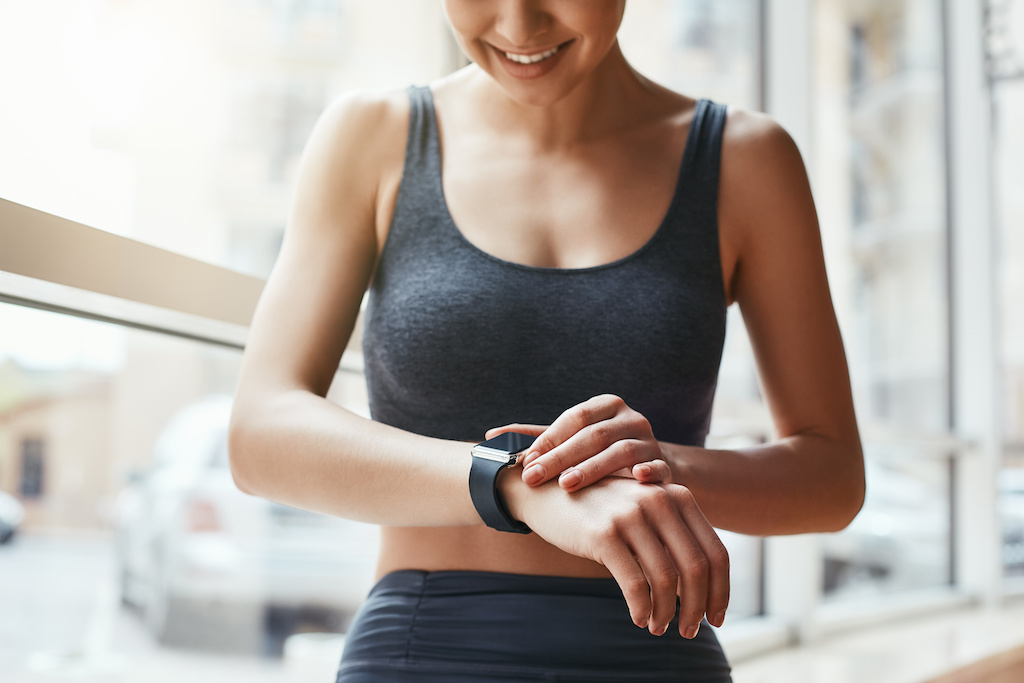Wearing a sports bra adapted to your body type and the activity you do is essential to feel comfortable and perform well. After having taken note of the 2 important criteria to consider when choosing a sports bra, find out what’s available.
Your Activity: Low, Medium or High-Impact?

Technical bras designed for sports have different levels of support to adapt to the discipline practised. A classic bra mainly supports the chest using underwiring, but this is not enough to absorb the shocks generated by any activity more intense than walking. Sports bras are generally classified according to the impact generated during exercise:
- Low impact: sports such as Pilates, yoga, Qi gong and strength training exercises without jumping, require a low level of support for the chest. For these gentle activities, focus on comfort first!
- Moderate impact: This includes dancing, cycling, elliptical, rowing and all non-impact cardio disciplines. The breasts are more supported, and the materials are more technical.
- High impact: Activities such as running, mountain biking, track and field, HIIT, cross-training, jumping rope, tennis, football or volleyball require a high level of support for the breasts.
If you are doing two activities of different intensities, don’t hesitate to get a sports bra adapted to each one. Generally speaking, the more developed your breasts are, the more you will benefit from good support.
Your Comfort: Bras for All Body Types

The size of a sports bra and its cut are two key elements for being comfortable, protecting your back and avoiding injury. Sizes differ according to the manufacturer and the range. Measure your chest size precisely and read the brand’s advice carefully before you choose your sports bra. The opinions of users are invaluable in order to get an idea of the correlation with classic lingerie sizes.
A sports bra that fits you well will not wrinkle, constrict or cut into your bust. Make sure that the back is also snug. X- or Y-straps are ideal for maintaining a good range of movement without being hindered by straps that fall to the sides. For small breasts and low-impact sports, compression is usually used as a support technique. Bras for larger breasts and more intense sports often offer support for each breast in a separate cup to limit up and down and side-to-side impact. Some brands offer bras for young mothers and larger breasts.
Our Choice of Technical, Comfortable and Ergonomic Sports Bras

To save time and give you some ideas on how to choose your sports bra, here are some technical ranges for all types of activities. As a bonus, we found a model that is suitable for resuming sport after childbirth.
Low-Impact Sports Bras
- The All Me range from Adidas: designed for weight training and yoga, these sports bras are made of a material that wicks away perspiration.
- Nike Indy bras from Nike: This range of soft bras features well thought out moderate support technology, such as Nike Yoga Dri-FIT, which is perfect for head-down yoga poses.
- Odlo Seamless Soft bras: these bras are easy to wash, lightweight and breathable.
Moderate-Impact Sports Bras
- The Adidas Don’t Rest range: Available in a variety of styles and colours, these bras are also available in larger sizes.
- Nike Swoosh bras: Padded and unpadded, these technical bras are made mostly of sustainable materials, such as recycled polyester.
- Odlo’s Seamless Medium: with a breathable back zone and seamless fit, you’ll be comfortable even in summer.
Sports Bras for Intense Impact
- The Stronger for It range by Adidas: designed for running and high impact sports, these bras made from recycled materials offer maximum support while absorbing sweat.
- Nike Alpha and FE/NOM bras: both these ranges of bras for intense sports have comfortable straps.
- Odlo High Bra: With seamless, moulded cups and adjustable padded straps, you can push yourself to your limits and keep your body in shape.
Bonus: some models, such as the Nike (M) Swoosh bra, are designed for resuming sport after giving birth. They make it easier to breastfeed, conceal traces of milk and are adjustable to follow the development of the size of the breast.
One last tip: a sports bra wears out faster than a conventional bra. Remember to check its condition regularly and replace it every year, or even every six months, depending on how often you work out. Follow the manufacturers’ washing recommendations to prolong its life!
Check out our Fitness equipment & Coaching page for more advice.
